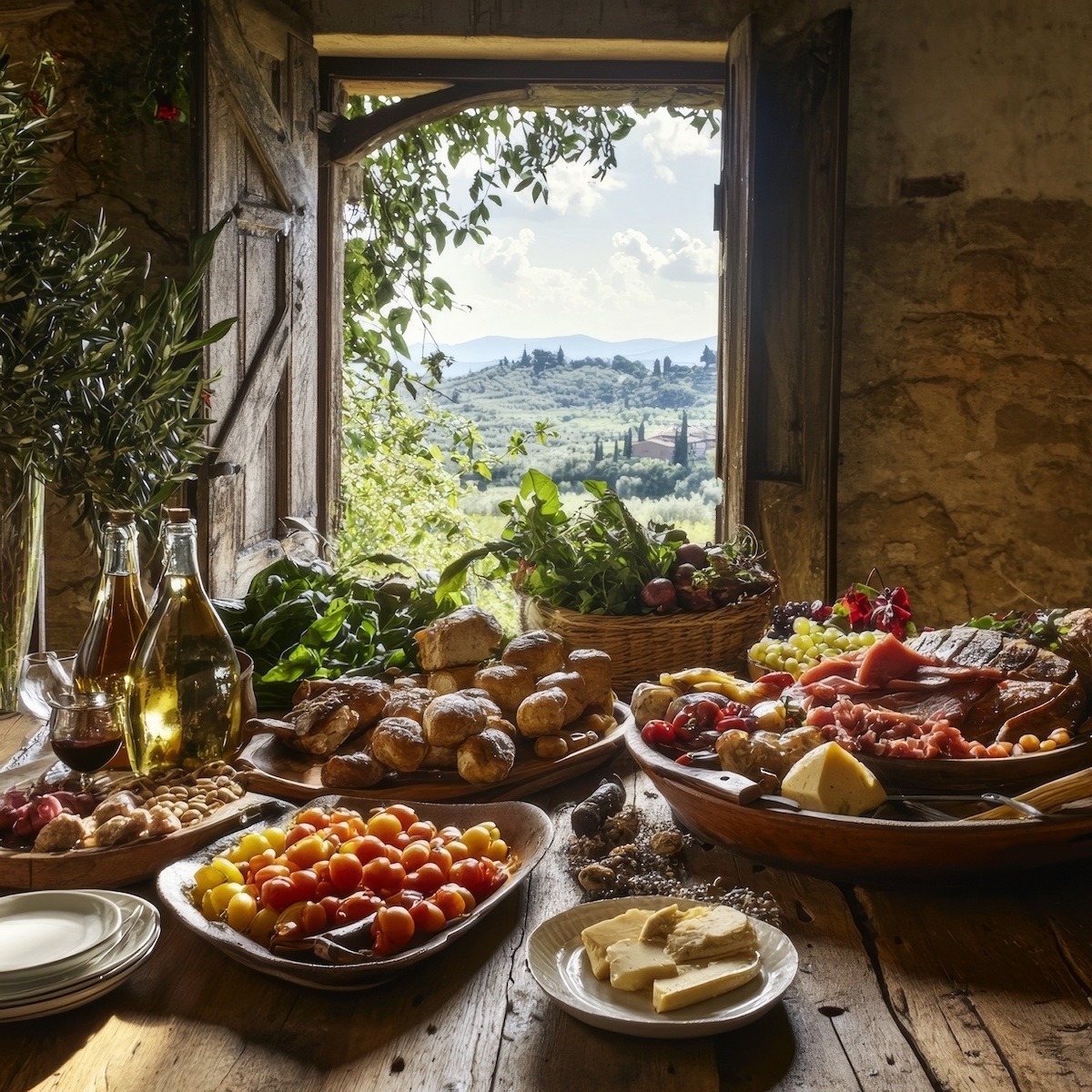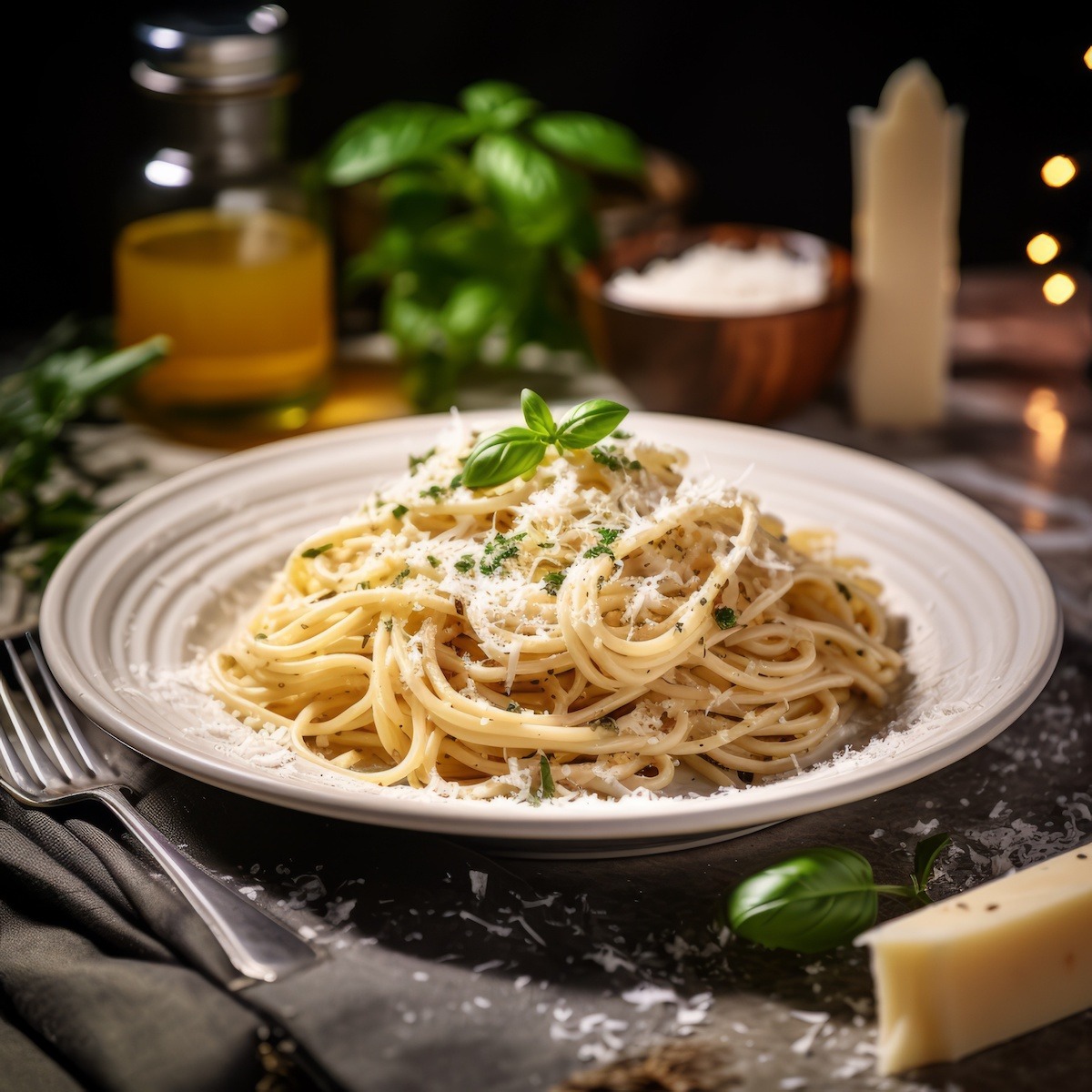

The Essence of Italian Cuisine: Tradition and Simplicity
Italian cuisine is a celebration of tradition, culture, and simplicity. Rooted in centuries-old recipes, it is known for using fresh, high-quality ingredients to create both flavorful and satisfying dishes. From the rolling hills of Tuscany to the coastal regions of Sicily, each area of Italy offers its unique culinary identity, shaped by local ingredients and customs. Italian food is not just about pasta and pizza—though beloved staples—it encompasses many dishes that showcase everything from rich, slow-cooked meats to fresh seafood, vibrant vegetables, and artisanal cheeses.
Central to Italian cooking is the philosophy of letting the ingredients shine, whether it’s the sweetness of a ripe tomato, the bite of a good olive oil, or the delicate balance of herbs. Meals are often social events to be savored and shared with loved ones. Whether indulging in a rustic dish of homemade gnocchi or enjoying the sophistication of a creamy risotto, Italian cuisine invites you to experience a rich tapestry of flavors that tell the story of Italy’s diverse regions and its love for food.
What Is Italian Cuisine?
Italian cuisine is a culinary tradition that reflects Italy’s rich cultural and regional diversity. It is characterized by its emphasis on fresh, high-quality ingredients and simple cooking techniques that highlight the natural flavors of the food. At its heart, Italian cuisine values authenticity, seasonality, and the deep connection between food, family, and tradition.
Italian cuisine staples include pasta, pizza, risotto, and bread, but the diversity within these dishes is vast. Different regions of Italy have their signature dishes and ingredients shaped by local geography, climate, and history. For example, Northern Italian cuisine often features creamy sauces, polenta, and rice, while Southern Italian cuisine is known for using tomatoes, olive oil, and seafood.
Italian cuisine also strongly emphasizes using fresh, seasonal ingredients like vegetables, herbs, meats, and seafood. Cheese, cured meats, and wines are also essential elements of Italian culinary tradition, with each region producing distinctive varieties.
Ultimately, Italian cuisine is more than just a collection of recipes; it reflects Italy’s history, culture, and love of food, where meals are often a time to gather, share, and celebrate.
History of Italian Cuisine
The history of Italian cuisine is a rich tapestry woven from centuries of cultural influences, regional traditions, and evolving tastes. It spans thousands of years, from the ancient Romans to the modern-day food culture that is celebrated worldwide.
Ancient Rome and Early Influences
Italian cuisine has its roots in the culinary traditions of ancient Rome, which was influenced by the Mediterranean diet of grains, legumes, vegetables, and olive oil. Roman cuisine also incorporated meats, fish, bread, and wine, central to meals. Trade routes brought exotic spices and ingredients from faraway places, contributing to the development of early Italian cooking.
Middle Ages
During the Middle Ages, the fall of the Roman Empire fragmented Italy into various regions, each developing its own distinct cuisine. The Arab influence in Sicily introduced ingredients like rice, sugar, citrus, and spices. Meanwhile, the northern regions were influenced by the French and Germanic cultures, leading to richer dishes with butter, cream, and meats.
The Catholic Church also played a significant role, with religious fasting periods emphasizing fish and meatless dishes, shaping Italian cooking methods and recipes.
Renaissance
The Renaissance was a turning point in Italian cuisine, particularly in Florence and other wealthy city-states. The courts of noble families, such as the Medicis, became centers of culinary innovation, where refined cooking techniques were developed. This period saw the introduction of new ingredients from the Americas, such as tomatoes, potatoes, corn, and chocolate, which eventually became staples in Italian cooking.
18th to 19th Centuries
Italy remained fragmented during the 18th and 19th centuries, with each region continuing to develop its culinary traditions. The unification of Italy in 1861 helped to bring these diverse regional cuisines together, but they still retained their unique characteristics. Italian cookbooks, such as La Scienza in Cucina e l’Arte di Mangiar Bene by Pellegrino Artusi, helped standardize and popularize Italian recipes.
20th Century and Global Influence
Italian cuisine gained global recognition in the 20th century due to Italian immigration to the United States, South America, and other parts of Europe. Italian immigrants brought their food traditions, and dishes like pizza, pasta, and espresso became beloved worldwide.
In the post-World War II era, Italy experienced an economic boom that further shaped its food culture. Regional specialties became more widely available, and Italian cuisine began to be celebrated for its quality, simplicity, and emphasis on fresh ingredients.
Modern Italian Cuisine
Today, Italian cuisine is known for its diversity, with regional dishes taking center stage in restaurants and homes across the globe. The Slow Food movement, which originated in Italy in the late 20th century, has further emphasized the importance of preserving traditional cooking methods and local ingredients. Modern Italian cuisine balances tradition with innovation, continuing to evolve while remaining deeply rooted in its historical and cultural foundations.
Italian food has become synonymous with quality, passion, and a deep connection to the land, making it one of the world’s most beloved and influential cuisines.
Influences on the Rest of the World
Italian cuisine has profoundly influenced the rest of the world, becoming one of the most beloved and recognizable culinary traditions globally. Its impact spans several centuries and has shaped food culture differently. Here are some key aspects of Italian cuisine’s influence:
1. Global Popularity of Italian Dishes
- Pizza and Pasta: Pizza and pasta are two iconic Italian foods that have become global staples. Originally from Naples, pizza has evolved into countless regional variations worldwide. Similarly, pasta has become a universal comfort food with its diverse shapes and sauces.
- Espresso and Coffee Culture: Italian espresso culture has spread worldwide, influencing how people consume coffee. The espresso bar concept and drinks like cappuccinos, lattes, and macchiatos have become integral to coffee culture globally.
2. Immigration and Culinary Spread
- Italian Diaspora: Large waves of Italian immigration in the late 19th and early 20th centuries brought Italian cuisine to countries like the United States, Argentina, Brazil, and Australia. Italian communities established restaurants, bakeries, and delis, introducing their culinary traditions to new audiences.
- Italian-American Cuisine: In the U.S., Italian immigrants adapted their dishes to local ingredients, giving rise to Italian-American cuisine, which popularized dishes like spaghetti and meatballs, chicken parmigiana, and New York-style pizza. This hybrid cuisine has had a lasting impact on the American food landscape.
3. Mediterranean Diet and Health
- Mediterranean Influence: Italian cuisine has promoted healthy eating worldwide as part of the broader Mediterranean diet. The Mediterranean diet, rich in olive oil, fresh vegetables, whole grains, and lean proteins, has been associated with numerous health benefits and has influenced dietary trends globally.
- Slow Food Movement: Originating in Italy, the Slow Food movement advocates preserving traditional and sustainable food practices. This movement has inspired global efforts to protect biodiversity, support local food producers, and prioritize quality over convenience.
4. High-Quality Ingredients and Cooking Philosophy
- Focus on Freshness and Simplicity: Italian cuisine’s emphasis on fresh, seasonal ingredients and simple cooking techniques has influenced chefs and home cooks worldwide. The Italian philosophy of “letting the ingredients shine” has inspired modern approaches to cooking that value authenticity and flavor over complexity.
- Artisanal Products: Italian products like Parmigiano-Reggiano cheese, prosciutto, balsamic vinegar, and extra virgin olive oil have become symbols of quality and are exported and prized globally. These ingredients have become integral to gourmet cooking worldwide.
5. Influence on Culinary Education
- Culinary Schools and Training: Italy’s culinary expertise has made it a destination for aspiring chefs seeking to learn traditional techniques. Renowned culinary schools in Italy, such as those in Florence and Bologna, attract students from around the globe. Italian cooking methods are studied and replicated in kitchens worldwide, particularly in pasta-making, bread-baking, and dessert preparation.
- Italian Chefs and Restaurants: Renowned Italian chefs and Michelin-starred Italian restaurants have brought Italian fine dining to the global stage, elevating the perception of Italian cuisine beyond its rustic roots.
6. Fusion Cuisine and Innovation
- Global Fusion: Italian cuisine’s flexibility and adaptability have led to fusion dishes that blend Italian techniques with other culinary traditions. For example, Japanese-Italian fusion combines Italian pasta with Japanese flavors, while Mexican-Italian cuisine might incorporate traditional ingredients like avocados and chilies into Italian dishes.
Italian cuisine has transcended its national borders to become a global phenomenon. Its emphasis on high-quality ingredients, regional diversity, and a celebration of simplicity has shaped how people eat and think about food worldwide, making it one of history’s most influential culinary traditions.

Key Ingredients
Italian cuisine is renowned for its simplicity, relying on a handful of key ingredients to create a wide range of dishes. Here are some of the essential ingredients associated with Italian cooking:
- Olive Oil: Extra virgin olive oil is a cornerstone of Italian cuisine. It is used for everything from sautéing vegetables to drizzling over salads and finished dishes.
- Tomatoes: Whether fresh, sun-dried, or canned, tomatoes are central to many Italian sauces, soups, and salads, particularly in Southern Italy.
- Garlic: Garlic flavors various dishes, adding depth and richness to sauces, meats, and vegetables.
- Basil: This aromatic herb is essential in Italian cooking, particularly in pesto and Caprese salad dishes.
- Cheese: Italian cuisine features a wide array of cheeses, including Parmesan, Pecorino, Mozzarella, and Ricotta, used in everything from pasta to pizza and desserts.
- Pasta: A staple of Italian cuisine, pasta comes in countless shapes and sizes. It is made from semolina flour and water and is often accompanied by a variety of sauces.
- Cured Meats: Prosciutto, salami, and pancetta are popular cured meats used in antipasti, sandwiches, and various cooked dishes.
- Seafood: Coastal regions of Italy incorporate fresh seafood like clams, mussels, anchovies, and octopus into their dishes.
Combined with a focus on freshness and simplicity, these ingredients form the foundation of Italian cuisine’s beloved flavors.

Cacio e pepe
Italian Culinary Regions
Italy’s diverse regions offer unique culinary traditions influenced by geography, climate, and local ingredients. Here are some of the top culinary regions in Italy and how they differ:
1. Tuscany
- Cuisine: Known for its rustic, simple dishes that highlight fresh, local ingredients.
- Specialties: Bistecca alla Fiorentina (grilled steak), ribollita (bread and vegetable soup), and Panzanella (bread salad).
- Difference: Tuscan cuisine emphasizes hearty, farm-to-table ingredients, particularly beans, bread, and meat, and it emphasizes olive oil over butter.
2. Emilia-Romagna
- Cuisine: Rich and indulgent, featuring some of Italy’s most famous foods.
- Specialties: Parmigiano-Reggiano cheese, Prosciutto di Parma, balsamic vinegar, and fresh pasta like tortellini and lasagna.
- Difference: Known as the food capital of Italy, Emilia-Romagna produces many iconic ingredients and focuses on rich, flavorful dishes with a strong emphasis on dairy.
3. Sicily
- Cuisine: A melting pot of flavors influenced by Greek, Arab, and Spanish cuisines.
- Specialties: Arancini (stuffed rice balls), caponata (eggplant salad), and cannoli (sweet pastry filled with ricotta).
- Difference: Sicily’s cuisine is vibrant and diverse, featuring bold flavors, seafood, citrus, and nuts, reflecting its Mediterranean location.
4. Piedmont
- Cuisine: Rich, elegant, and refined, often associated with high-end dining.
- Specialties: Truffles, Barolo wine, risotto, and bagna càuda (garlic and anchovy dip).
- Difference: Piedmont is famous for its truffles and wines, and its cuisine highlights earthy, luxurious ingredients and French influences.
5. Campania
- Cuisine: Vibrant and hearty, emphasizing tomatoes, mozzarella, and seafood.
- Specialties: Neapolitan pizza, spaghetti alle vongole (clams), and sfogliatella (layered pastry).
- Difference: Home to Naples, Campania is the birthplace of pizza and is known for bold and satisfying dishes emphasizing tomatoes and fresh dairy.
6. Veneto
- Cuisine: Combined with coastal and inland flavors, it is known for its use of rice and seafood.
- Specialties: Risotto, polenta, and baccalà (salt cod).
- Difference: Veneto’s cuisine is varied, balancing the influences of the Adriatic Sea with the fertile plains, resulting in a mix of seafood dishes and hearty risottos.
7. Lazio
- Cuisine: Simple, bold, and often based on Roman traditions.
- Specialties: Cacio e pepe (pasta with cheese and pepper), carbonara, and saltimbocca (veal with prosciutto and sage).
- Difference: Lazio, particularly Rome, focuses on robust flavors with minimal ingredients, often featuring pasta, meats, and bold sauces.
These regions showcase the rich diversity of Italian cuisine, each offering its unique take on traditional Italian flavors based on local ingredients and historical influences.
 Print
Print




